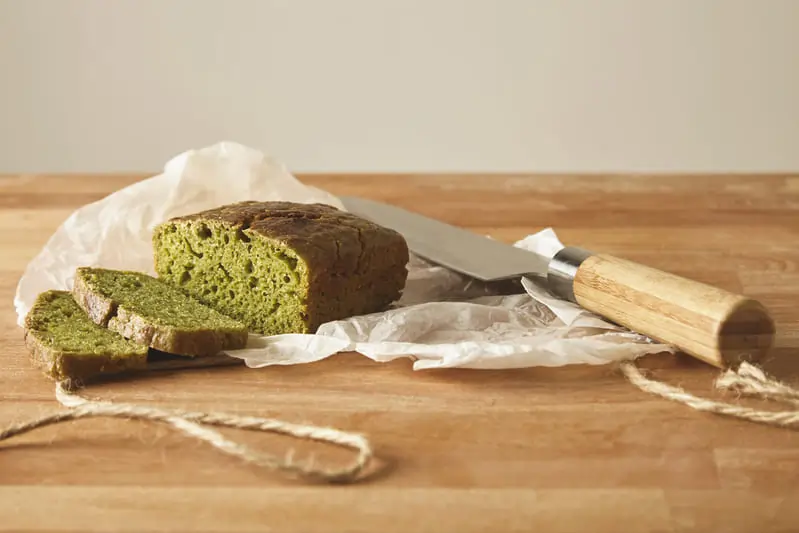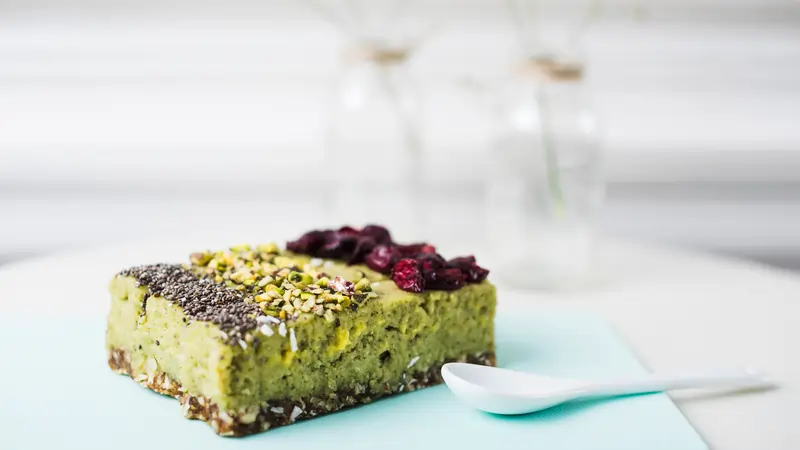How does matcha affect baking? the finely powdered Japanese green tea, has gained immense popularity in the baking world for its unique flavor, vibrant green hue, and health benefits. But how does matcha truly affect baking? Understanding its impact on flavor, texture, and presentation can help you create standout recipes.
If you’re curious about adding creativity to your baking, explore The Perfect Fusion of Banana Bread Cookies for more inspiration.
Why Matcha is Perfect for Baking
Matcha isn’t just a trend; it’s an ingredient that enhances baked goods in several ways. Its earthy flavor profile complements sweet desserts, while its natural green color eliminates the need for artificial dyes. Additionally, matcha adds a nutritional boost, making desserts feel indulgent yet health-conscious.
Looking for an easy snack to pair with your matcha-based treats? Try this Simple and Delicious 4-Ingredient Banana Bread.
How Matcha Impacts Baking
Matcha is a versatile ingredient that not only enhances the flavor and visual appeal of baked goods but also improves their texture. Its unique properties make it an excellent addition to a variety of desserts, adding a touch of elegance and health benefits to classic recipes. Here’s how matcha transforms baking:
1. Flavor Transformation
Matcha’s subtle, earthy bitterness provides a distinctive flavor profile that balances the sweetness in baked goods, preventing them from becoming overly sugary. Its complexity pairs well with both sweet and tangy elements, creating desserts that feel rich and well-rounded.
Best Pairings for Matcha
- Vanilla or Almond Extract: These extracts enhance matcha’s delicate undertones without overpowering its natural flavor. Almond extract, in particular, adds a slightly nutty aroma that complements matcha beautifully.
- White Chocolate: The creamy sweetness of white chocolate offsets matcha’s bitterness, resulting in a harmonious blend of flavors. This pairing works especially well in cookies, brownies, and cakes.
- Citrus Zest: Lemon or orange zest introduces a refreshing brightness that lifts matcha’s earthy notes, adding a layer of tanginess and complexity.
For a dessert that balances sweetness and tang, try this Hawaiian Banana Bread Recipe, where bold flavors come together in a delicious harmony.
2. Visual Appeal
One of matcha’s standout features is its vibrant green color, which acts as a natural food coloring. This striking hue elevates the appearance of baked goods, making them visually stunning and unique. However, matcha’s color can fade during baking if not handled correctly.
Tips to Preserve Matcha’s Color
- Bake at Lower Temperatures: High heat can dull matcha’s green hue. Opt for baking at slightly lower temperatures for longer periods to retain its vibrancy.
- Use Culinary-Grade Matcha: Matcha designed specifically for baking is formulated to withstand heat better, maintaining its bold color throughout the baking process.
- Incorporate Matcha Last: Add matcha powder toward the end of mixing to minimize oxidation, which can also lead to color fading.
For more tips on preserving natural colors in desserts, check out this guide on Perfecting Colorful Baked Goods.
3. Texture Enhancement
As a fine powder, matcha integrates seamlessly with other dry ingredients, ensuring a smooth, lump-free batter. Its moisture-retaining properties also enhance the softness and texture of baked goods, resulting in desserts that are tender and moist.
How to Incorporate Matcha
- Sift with Dry Ingredients: Always sift matcha powder along with flour and other dry ingredients to prevent clumping and ensure even distribution.
- Blend Thoroughly: Mix matcha carefully into the batter to achieve a uniform flavor and color throughout the baked goods. In recipes like cookies or cakes, this step ensures consistency in every bite.
For inspiration on creating moist, flavorful desserts, explore this recipe for Easy and Moist Banana Bread, which showcases how simple techniques can elevate baked goods.
Health Benefits of Matcha in Baking

Matcha isn’t just a flavorful and visually striking addition to baked goods—it also offers a range of health benefits. Packed with antioxidants, vitamins, and amino acids, matcha adds a nutritional boost to your favorite recipes. While some benefits may diminish due to heat during baking, careful preparation and ingredient pairing can help retain its positive impact. Here’s how matcha contributes to healthier baked creations:
1. Rich in Antioxidants
Matcha is a powerful source of antioxidants, particularly catechins, which help fight oxidative stress and support overall health. These antioxidants remain active even in baked goods, though their potency can decrease with prolonged exposure to high heat.
How to Maximize Antioxidant Retention:
- Use culinary-grade matcha, which is specifically formulated to withstand heat, ensuring more antioxidants remain intact during baking.
- Bake at lower temperatures to reduce nutrient loss while preserving matcha’s vibrant color and health benefits.
For more tips on baking with nutrient-rich ingredients, explore this guide on Healthy Banana Bread Recipes.
2. Source of Essential Vitamins and Minerals
Matcha is naturally rich in vitamins A, C, and E, as well as trace minerals like potassium and magnesium. Adding matcha to baked goods can complement these nutrients, especially when paired with other wholesome ingredients.
Nutrient-Packed Pairings:
- Combine matcha with oats, which are high in fiber and heart-healthy. This pairing works perfectly in cookies or muffins.
- Use nuts like almonds or walnuts, which provide healthy fats and additional vitamins to amplify the nutritional value of your baked goods.
For a recipe that combines oats and natural ingredients seamlessly, try this 4-Ingredient Banana Bread Recipe.
3. Amino Acids for Calm Focus
Matcha contains L-theanine, an amino acid that promotes relaxation and focus. This compound works alongside matcha’s moderate caffeine content to provide sustained energy without the jitters typically associated with coffee. Although some of its effects may reduce during baking, matcha still contributes to a calming yet invigorating quality in desserts.
Best Uses:
- Incorporate matcha into breakfast bars or granola cookies for a gentle energy boost throughout the day.
- Pair matcha with dark chocolate, which also contains beneficial compounds like flavonoids, for a dessert that nourishes both body and mind.
4. Metabolism Support
Matcha is known for its metabolism-boosting properties, thanks to its combination of catechins and caffeine. While baking may reduce the intensity of this benefit, desserts made with matcha still offer a healthier alternative to treats made with refined sugars or artificial ingredients.
Tips for Healthier Baking:

- Replace refined sugar with natural sweeteners like honey or maple syrup, which pair beautifully with matcha’s flavor.
- Use whole-grain flours or gluten-free alternatives to create lighter, more nutrient-dense baked goods.
Final Considerations for Baking with Matcha
To maximize matcha’s health benefits in baked goods:
- Opt for culinary-grade matcha to ensure better retention of nutrients at higher temperatures.
- Pair matcha with nutrient-dense ingredients like oats, nuts, or whole grains for enhanced nutritional value.
- Experiment with recipes like Matcha Tiramisu to enjoy matcha’s unique flavor and health benefits in a variety of creative ways.
Health Benefits of Matcha in Baking
Matcha is rich in antioxidants, vitamins, and amino acids. Adding it to baked goods provides a nutritional boost, though some benefits may diminish due to heat during baking.
Key Considerations:
- Use culinary-grade matcha for recipes requiring high heat.
- Combine matcha with nutrient-dense ingredients like nuts or oats for added health benefits.
Health Benefits of Matcha in Baking
Matcha is not only a flavorful and visually appealing ingredient but also a powerhouse of antioxidants, vitamins, and amino acids. Incorporating matcha into baked goods can elevate their nutritional profile, providing health benefits that go beyond the usual indulgence of desserts. While heat during baking may reduce some of matcha’s potency, careful ingredient selection and preparation techniques can help retain its benefits.
1. Packed with Antioxidants
Matcha is renowned for its high levels of catechins, a type of antioxidant that combats oxidative stress and promotes cellular health. Even though baking reduces some antioxidant activity, a significant portion remains intact, making matcha-infused desserts a healthier choice compared to traditional baked goods.
Tips for Maximizing Antioxidants:
- Use culinary-grade matcha, which is designed to withstand the heat of baking.
- Bake at slightly lower temperatures for longer durations to preserve more antioxidants.
If you’re interested in more antioxidant-rich recipes, explore this Healthy Banana Bread Guide, which features nutrient-dense ingredients perfect for guilt-free indulgence.
2. Rich in Vitamins and Minerals
Matcha contains an array of essential vitamins and minerals, including vitamins A, C, and E, as well as potassium, magnesium, and calcium. When added to baked goods, these nutrients can complement other ingredients to create a more balanced and nourishing treat.
Nutrient-Enhancing Pairings:
- Pair matcha with oats for their fiber and beta-glucan content, which support heart health.
- Add nuts like walnuts or almonds for their healthy fats and additional vitamins. This combination works beautifully in cookies, granola bars, or muffins.
For inspiration, try combining matcha with nutrient-packed ingredients like oats in this 4-Ingredient Banana Bread Recipe.
3. Supports Calm Energy with L-Theanine
Matcha’s unique compound, L-theanine, works alongside its caffeine content to provide a calm and focused energy boost. Although some L-theanine may break down under high heat, matcha-infused baked goods still offer a gentler energy lift compared to caffeine-heavy desserts.
Best Applications:
- Use matcha in breakfast cookies or snack bars for a steady release of energy throughout the day.
- Combine matcha with other soothing ingredients like dark chocolate for a dessert that balances stimulation and relaxation.
4. Boosts Metabolism and Fat Burning
Matcha is known for its ability to support metabolism and fat burning due to its combination of catechins and caffeine. While the effectiveness may decrease slightly during baking, incorporating matcha into lighter desserts with nutrient-dense ingredients ensures you’re still enjoying a healthier treat.
Tips for Healthier Baked Goods:
- Use whole-grain flours or gluten-free alternatives for a fiber-rich base.
- Swap refined sugar for natural sweeteners like honey or maple syrup, which complement matcha’s flavor while reducing the overall sugar content.
5. Acts as a Natural Food Coloring
Matcha’s vibrant green hue is more than just decorative—it’s an indicator of its nutrient density. Even in baked goods, matcha provides a striking color without the need for artificial additives. For best results, ensure you’re using high-quality matcha and baking at moderate temperatures to retain its bold color.
Final Considerations for Baking with Matcha
To make the most of matcha’s health benefits in baked goods:
- Opt for culinary-grade matcha to handle the heat of baking while retaining maximum nutritional value.
- Pair matcha with oats, nuts, or whole grains to create nutrient-dense desserts that are as wholesome as they are delicious.
- Experiment with versatile recipes like Matcha Tiramisu to explore new ways of incorporating this superfood into your dessert repertoire.
Practical Tips for Baking with Matcha
1. Choose the Right Grade
Matcha comes in two main grades: ceremonial and culinary. While ceremonial-grade matcha is prized for its delicate flavor, culinary-grade matcha is stronger, more affordable, and better suited for baking.
Usage Tips:
- Culinary-Grade Matcha: Ideal for cookies, cakes, and bread.
- Ceremonial-Grade Matcha: Reserved for no-bake recipes like mousse or ice cream.
2. Avoid Common Mistakes
Baking with matcha can be tricky. Avoid these common pitfalls:
- Using Too Much Matcha: Can result in an overly bitter taste.
- Failing to Sift Matcha: Creates clumps in the batter.
- Baking at High Temperatures: Fades matcha’s green hue and can affect flavor.
For troubleshooting tips in baking, explore Why Is My Banana Bread Not Moist?.
3. Experiment with Recipes
Matcha’s versatility makes it a great addition to a variety of baked goods. Here are a few ideas to get started:
- Matcha Cookies: Crisp and flavorful with a hint of bitterness.
- Matcha Cheesecake: Creamy and vibrant with a green tea twist.
- Matcha Macarons: Elegant and perfect for special occasions.
- Matcha Bread: Fluffy and ideal for breakfast or tea time.
For a unique twist, you could try incorporating matcha into Brown Butter Banana Bread.
FAQs About Matcha in Baking
1. What does matcha do in baking?
Matcha adds flavor, natural color, and nutritional benefits to baked goods. Its earthy taste pairs beautifully with sweet flavors and enhances the visual appeal with its vibrant green hue. For a recipe that highlights matcha’s versatility, check out Banana Bread Cookies: The Perfect Fusion of Two Desserts.
2. Can you use ceremonial-grade matcha for baking?
Yes, but it’s best reserved for recipes that don’t rely on high heat, such as mousses or no-bake desserts. For baked goods where flavor is key, consider pairing matcha with complementary ingredients as seen in Hawaiian Banana Bread.
3. Does matcha lose nutrients when baked?
High heat can reduce its antioxidants, but baked goods still retain its unique flavor and visual appeal. If you want a recipe that preserves matcha’s benefits, try this guide to Simple and Delicious 4-Ingredient Banana Bread.
4. What pairs well with matcha in baking?
Flavors like vanilla, white chocolate, and citrus complement matcha beautifully. For inspiration, explore Brown Butter Banana Bread: A Delicious Twist on a Classic Favorite.
5. How do you maintain matcha’s green color when baking?
Bake at lower temperatures and avoid prolonged exposure to heat. Using high-quality matcha and proper techniques, such as those highlighted in Why Is My Banana Bread Not Moist? Troubleshooting Common Baking Issues, can help retain its vibrant color.
Conclusion
Matcha is a versatile and exciting ingredient in modern baking, adding a distinctive flavor, a vibrant green hue, and a touch of healthfulness to any recipe. Whether you’re making cookies, cakes, or bread, understanding how matcha affects baking can help you achieve the perfect results.
For more creative recipes and inspiration, explore The Ultimate Guide to Making 5-Ingredient Banana Bread.

